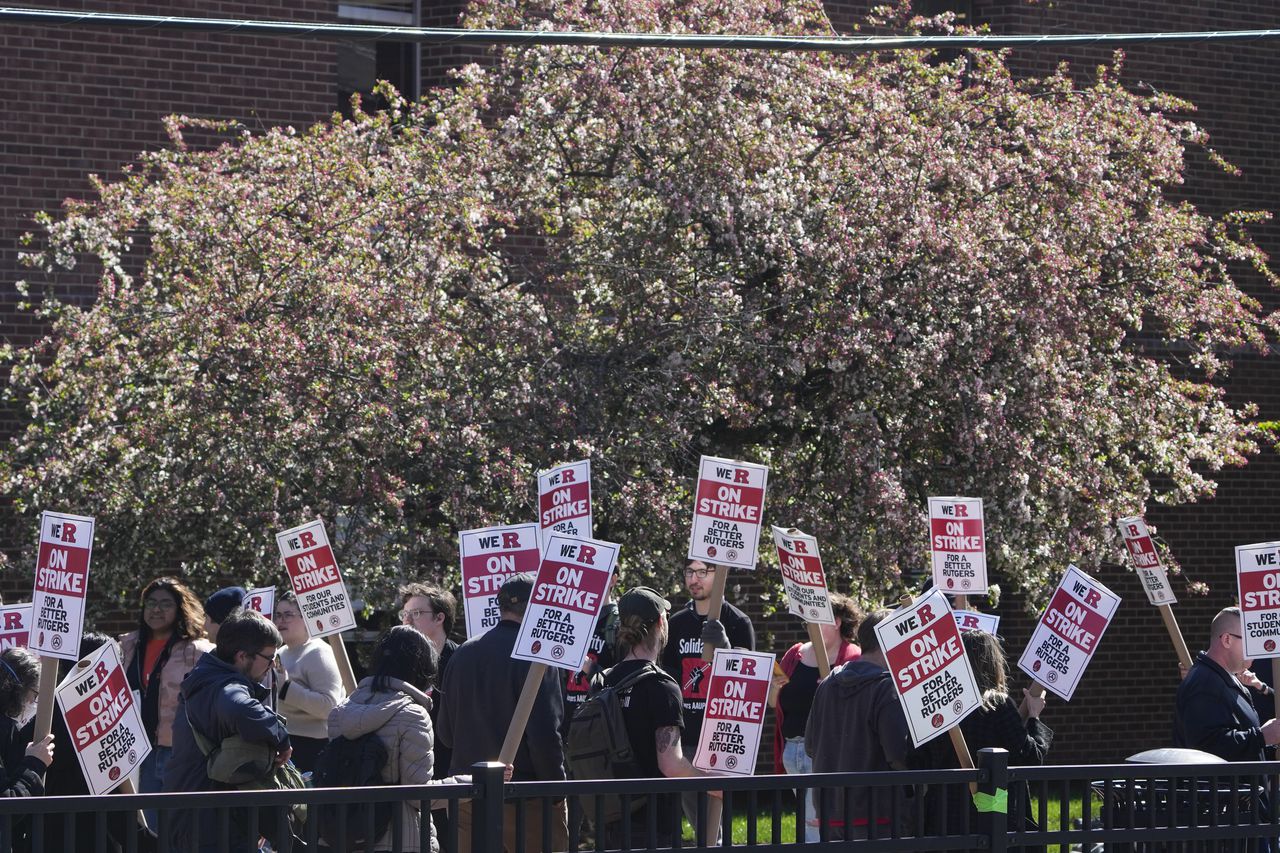Why university strikes are becoming more common, and successful, for workers
Faculty and staff from three Illinois universities went on strike over the past week. Rutgers University is the latest to follow suit.
The key sticking point that ultimately led to these strikes? Wages.
Chicago State University (CSU) faculty went on strike early last week (April 3) after several months of stalled negotiations with university administrators over low salaries and compensation.
Faculty at Eastern Illinois University (EIU) followed suit, going on strike Thursday after university officials and EIU chapter of the University Professionals of Illinois Local 4100 – the union representing CSU as well – couldn’t come to an agreement after bargaining for a year.
The latest of these strikes include three faculty unions representing around 9,000 Rutgers University workers, who went on strike Monday morning after the university blocked their attempts to re-negotiate contracts for over a year, according to NPR.
But strikes in higher education are nothing new. They’ve just become more frequent following the pandemic, said William A. Herbert, executive director of the National Center for the Study of Collective Bargaining in Higher Education and the Professions.
“Over a century ago, acting Bryn Mawr President Helen Taft advocated for faculty to strike for higher wages,” said Herbert.
In a 1919 speech to Bryn Mawr’s alumni association, Taft stated that a faculty strike would not be against the college executives, directors or trustees, but against the public who ought to pay for an education.
“I think they would be justified in striking and refusing to serve the country on the present financial terms because they have suffered more than any of the professions whose strikes we are now facing,” Taft said in her speech.
Years of declining state investment in higher education, along with dramatic enrollment decreases, have caused some fiscal stress, particularly for those universities that serve more traditionally underrepresented student populations. Between 2000 and 2022, state funding for public universities was cut nearly in half.
“Like low-income kids, rural kids, minority kids,” said Center for Tax and Budget Accountability (CTBA) Executive Director, Ralph Martire, to the Chicago Sun Times.
UIC United Faculty – the labor union representing faculty and staff at University of Illinois-Chicago (UIC) – went on strike under similar circumstances back in January 2023, and won.
That’s why Charitianne Williams, UIC United Faculty’s communications chair and bargaining committee member, is hopeful about the outcomes of these work stoppages. “Because the alternative is to let our universities fail, or at least, fail to thrive,” said Williams.
She adds that years of state budget cuts to higher education and disinvestment created a sense of “urgent austerity” among administrations.
“The idea of investing in faculty and students first… has not been normalized,” she said.
And the hiring freezes, furlough days and reduced resources – on top of a pandemic – caused many UIC faculty and staff to reach a breaking point… which ultimately strengthened their resolve as a union as they continued bargaining with university administrators.
“[We] understood what the objectives were, and truly believed in them,” said Williams. “We were very careful in looking at finding out what we could about the financial status of the university.”
That meant thoroughly understanding the economic strengths and weaknesses of where the university was positioned, pursuing goals that were realistic and within reach of the university and maintaining a belief in the value of the goals they were trying to achieve.
“I think [that] kept us strong and motivated in a way that proved our point,” said Williams.
These helped secure their victory a week after they went on strike.
That’s why Williams thinks ongoing strikes across Illinois are “just about the chickens coming home.”
“[University] administrations are going to have to pay attention to the demands of these faculty unions,” she said. “It’s been about 20 years that we’ve been working against the structural deficit. You cannot expect to hire and retain high quality faculty under those conditions.”
